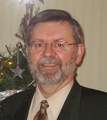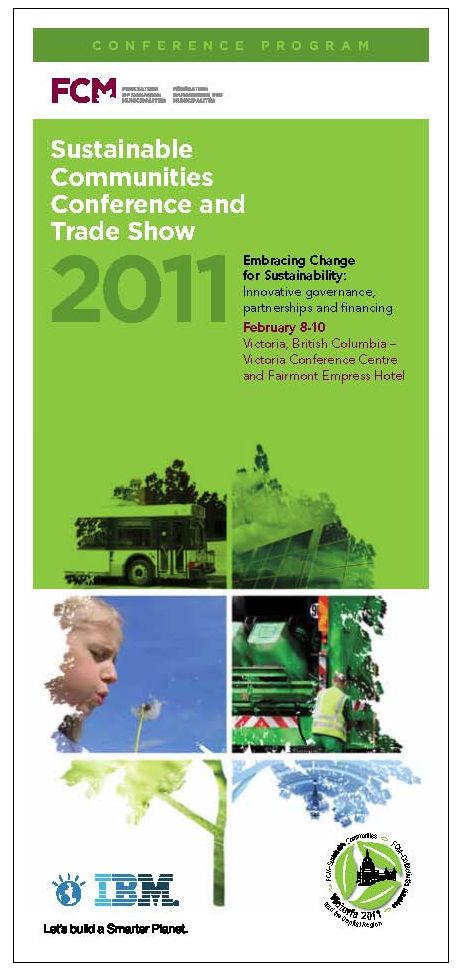FLASHBACK TO 2011: “Water sustainability is the lens to focus attention on how we can manage the built environment more sustainably. We will be successful when settlement change is in balance with ecology,” stated Kim Stephens at the FCM Sustainable Communities Conference held in Victoria, BC
Note to Reader:
STEAL THIS IDEA! Imitation is the sincerest form of flattery. At the 2011 FCM Sustainable Communities Conference, eight innovators from across Canada, shared their breakthrough examples of municipal sustainability in a range of sectors. A short presentation led into small group discussions.
 “Three half-hour sessions gave participants the chance to check out their favourite ideas and get the scoop on how to bring them back to their own communities,” explains Azzah Jeena, the person responsible for organizing the session. “This session was held for the first time during the 2010 conference and it was very popular with delegates.”
“Three half-hour sessions gave participants the chance to check out their favourite ideas and get the scoop on how to bring them back to their own communities,” explains Azzah Jeena, the person responsible for organizing the session. “This session was held for the first time during the 2010 conference and it was very popular with delegates.”
“There was a great deal of excitement and energy in the room and it seemed that delegates were very engaged during the various roundtable discussions. The on-the-spot evaluation in the session room indicated a high level of satisfaction with the content and format of the session.”

Embracing Change for Sustainability
In 2011, the Federation of Canadian Municipalities (FCM) held its Sustainable Communities Conference outside the Ottawa region for the first time. Hosted by the City of Victoria in February, the theme for the 2011 event was Embracing Change for Sustainability: Innovative governance, partnerships and financing.
The “Steal This Idea!” session was presented by FCM’s Green Municipal Fund; and moderated by Emanuel Machado, Manager of Sustainability Services and Special Projects with the District of Sechelt, BC.
Steal This Idea!
“At the start of the session, each roundtable host stood up and gave a one minute overview of their topic. Delegates were then asked to select a roundtable.At each table rotation, hosts gave short presentations to groups of up to 10 people at their tables, followed by questions and discussion,” explains Azzah Jeena.
 When Emanuel Machado introduced the Roundtable Hosts, he singled out Kim Stephens for special mention: “On a personal note, Kim Stephens has been a source of inspiration to me.” This special mention was in reference to a workshop in 2006 that Emanuel Machado organized while he was with the City of Dawson Creek.
When Emanuel Machado introduced the Roundtable Hosts, he singled out Kim Stephens for special mention: “On a personal note, Kim Stephens has been a source of inspiration to me.” This special mention was in reference to a workshop in 2006 that Emanuel Machado organized while he was with the City of Dawson Creek.
“The interactive nature of the Steal This Idea! session allowed the participants to move from simply receiving information to engaging and sharing lessons and knowledge,” commented Emanual Machada afterwards.
The Roundtable Hosts
- Mark Brostrom, Director, Office of Environment, City of Edmonton, Alberta: Edmonton Solar residential pilot
- Kimberley Needham, Strategy Planner, Squamish-Lilloet Regional District, BC: Energy Resilience Task Force Project: Community Resilience for Peak Oil and Climate Change
- Russell Smith, Manager, Sustainability, City of Medicine Hat, Alberta: Community Impact of Medicine Hat’s Energy Sustainability Incentive Program
- Councillor John Luton, City of Victoria, BC: Sustainable Cycling Infrastructure on the Ground
- Kim Stephens, Executive Director, Partnership for Water Sustainability in British Columbia: Mission Possible: A 50-Year Vision for Urban Watershed Restoration
- Joanna Linsangan, Manager of Public Relations, BC Transit: BC Transit Future Bus – Public Participation on Wheels
- Mayor Anderson, Town of the Blue Mountains, Ontario: Brownfield Remediation Project-New Town Hall
- Chairperson Ben Smith, Community of Victoria, Prince Edward Island: Water and Wastewater Pilot Project
Connect Dots to 2006 Dawson Creek Workshop
In December 2006, Kim Stephens introduced Peace River communities to the vision for facilitiating change under the umbrella of the Water Sustainability Action Plan, with emphasis on the potential for the Water Bucket Website to “tell the stories” of change agents in the local government setting.
“Water in BC is under-valued, under-priced and over-used. The Waterbucket website is having a tremendous impact in helping our communities to address that challenge by providing awareness, tools and resources that build capacity. This is leading to the implementation of integrated strategies such as the Water- wise Dawson Creek,” states Emanuel Machado.
To learn more about the significance of the Dawson Creek event, click on Peace River region introduced to the ‘Water Sustainability Action Plan for British Columbia’
Mission Possible in British Columbia
“In British Columbia, the Partnership for Water Sustainability has a vision for reconnecting communities with the land. Simply put, we believe if we respect the land, WATER SUSTAINABILITY will follow. Getting there requires a change in mind-set…. and LAND ETHIC,” stated Kim Stephens in his topic overview.
“We are CONNECTING THE DOTS between land use planning, development, watershed health AND infrastructure asset management. When communities are guided by a DESIGN WITH NATURE philosophy, water sustainability can be achieved. It will be achieved by implementing GREEN INFRASTRUCTURE policies and practices.”
 “We describe this as MISSION POSSIBLE….. because those operating in the local government setting can now access tools and experience…… that will enable them to make a difference. Our approach is TOP-DOWN / BOTTOM-UP. It is keyed to three words: ALIGNMENT, COLLABORATION, INTEGRATION.”
“We describe this as MISSION POSSIBLE….. because those operating in the local government setting can now access tools and experience…… that will enable them to make a difference. Our approach is TOP-DOWN / BOTTOM-UP. It is keyed to three words: ALIGNMENT, COLLABORATION, INTEGRATION.”
“We are CONVENING FOR ACTION. When we gather, it is for a purpose. There must be an outcome. We are challenging those in local government: WHAT DO YOU WANT THIS PLACE TO LOOK LIKE IN 50 YEARS? To get there, you will have to start now. Actions ripple through time.”
“Water sustainability is the lens to focus attention on how we can manage the BUILT ENVIRONMENT more sustainably. We will be successful when SETTLEMENT CHANGE IS IN BALANCE WITH ECOLOGY. This is how we will restore the health of our URBAN WATERSHEDS.”
About the Partnership for Water Sustainability in BC
“Incorporated in November 2010, the Partnership is an autonomous non-profit society. The Partnership had its genesis in the Water Sustainability Committee of the BC Water and Waste Association,” explains Kim Stephens.
“The Partnership is helping the Province implement the Living Water Smart and Green Communities initiatives. We are doing that through shared responsibility in delivering the Water Sustainability Action Plan. Because the Partnership is the hub for a ‘convening for action’ network in the local government setting, we are positioned to facilitate alignment of regional and local actions with provincial goals.”
“We primarily work in the local government context, with a focus on community and regional planning systems, to influence uptake of strategies that will integrate decisions about use and conservation of land with water sustainability outcomes. The guiding philosophy is ‘design with nature’,” concludes Kim Stephens.
To Learn More:
To download a copy of the handout that guided the roundtable conversation at the table hosted by Kim Stephens, click on FCM Sustainable Communities Conference 2011 – Handout for “Steal This Idea!” Session



